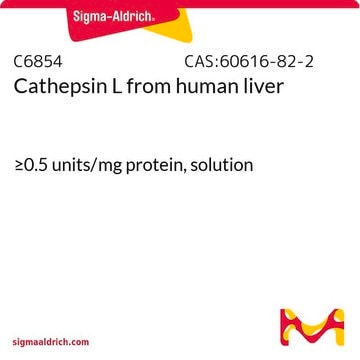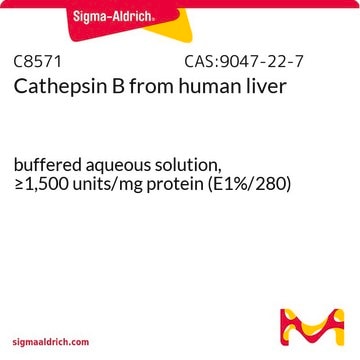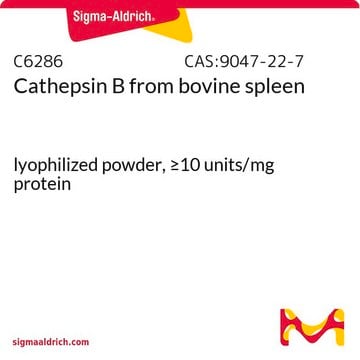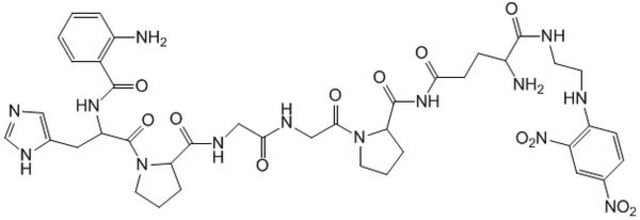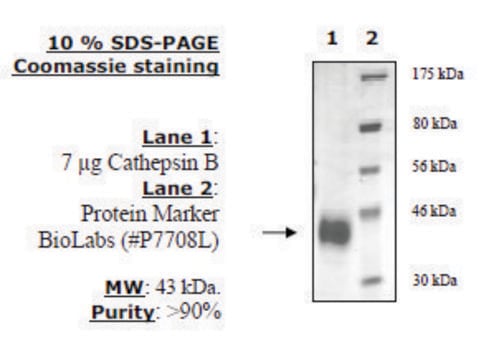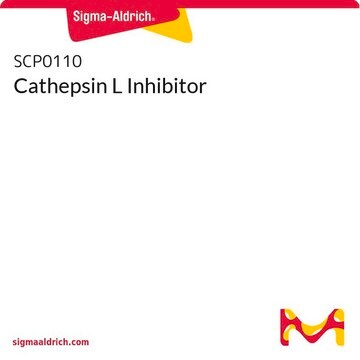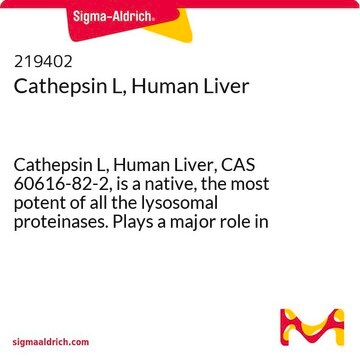SRP0291
Cathepsin L Active human
recombinant, expressed in FreeStyle™ 293-F cells, ≥90% (SDS-PAGE)
Synonym(s):
CATL, Major excreted protein (MEP)
About This Item
Recommended Products
biological source
human
recombinant
expressed in FreeStyle™ 293-F cells
Assay
≥90% (SDS-PAGE)
form
aqueous solution
specific activity
≥3900 pmol/min-μg
mol wt
36 kDa
technique(s)
inhibition assay: suitable
suitability
suitable for molecular biology
NCBI accession no.
application(s)
life science and biopharma
shipped in
dry ice
storage temp.
−70°C
Gene Information
human ... CTSL(1514)
General description
Cathepsin L is a papain-like cysteine protease and belongs to the Clan A, Family C1. It is composed of L domain of α-helix and an R domain of β-sheet in the spatial structure.
Human cathepsin L (GenBank Accession No. NM_001912), amino acids 18-333, with C-terminal HIS tag, MW = 36 kDa, expressed in FreeStyle 293-F cells.
Application
- to determine that N-acyl and N-sulfonyloxazolidine-2,4-diones are pseudo-irreversible inhibitors of serine proteases
- to investigate the role of cathepsin B and L activity in the serum during the human aging process.
- in inhibitory activity assay
- to study the role of CTSL in COVID-19 infection
Biochem/physiol Actions
Unit Definition
Physical form
Preparation Note
Legal Information
Storage Class Code
10 - Combustible liquids
WGK
WGK 1
Flash Point(F)
Not applicable
Flash Point(C)
Not applicable
Certificates of Analysis (COA)
Search for Certificates of Analysis (COA) by entering the products Lot/Batch Number. Lot and Batch Numbers can be found on a product’s label following the words ‘Lot’ or ‘Batch’.
Already Own This Product?
Find documentation for the products that you have recently purchased in the Document Library.
Our team of scientists has experience in all areas of research including Life Science, Material Science, Chemical Synthesis, Chromatography, Analytical and many others.
Contact Technical Service